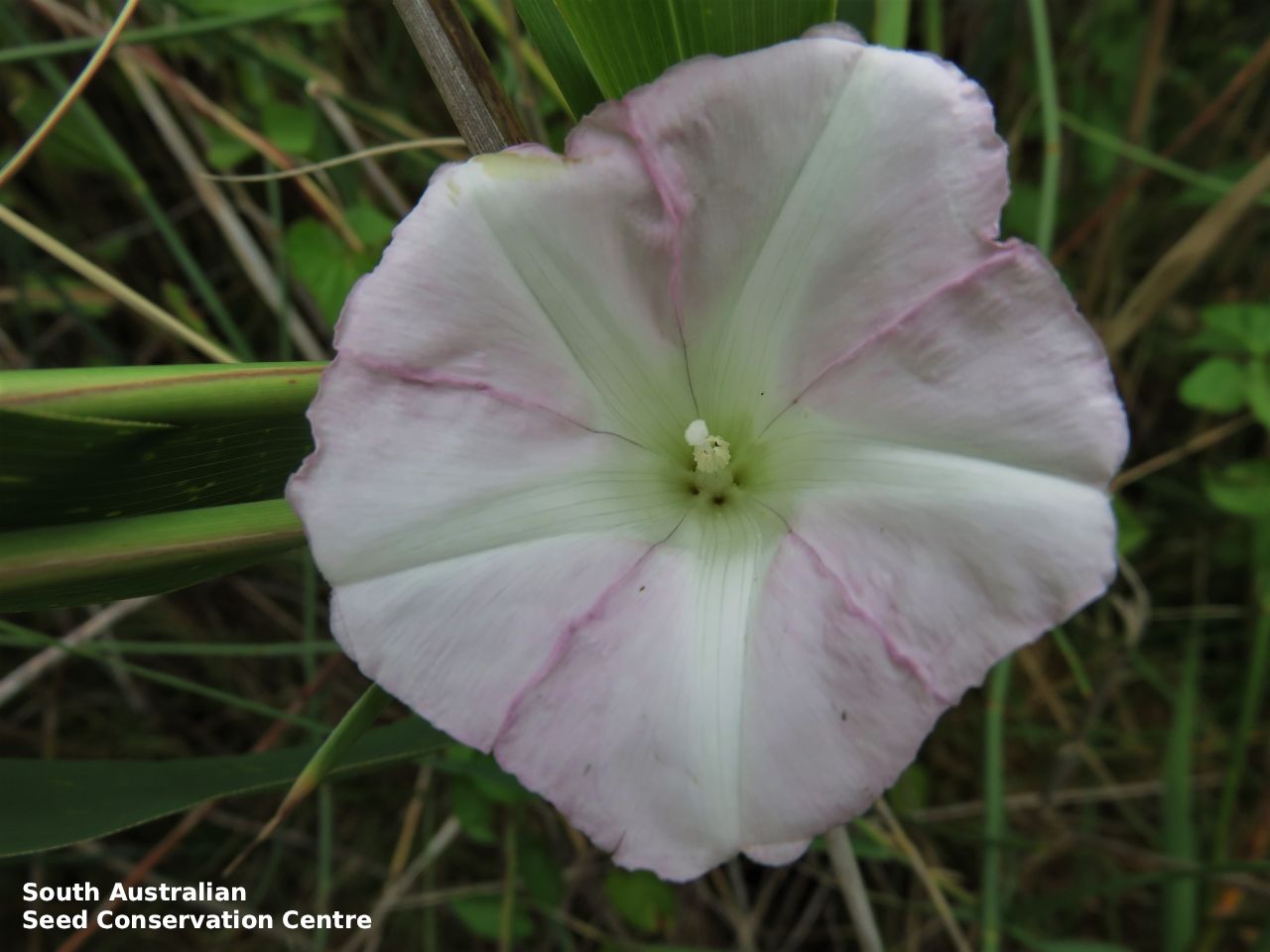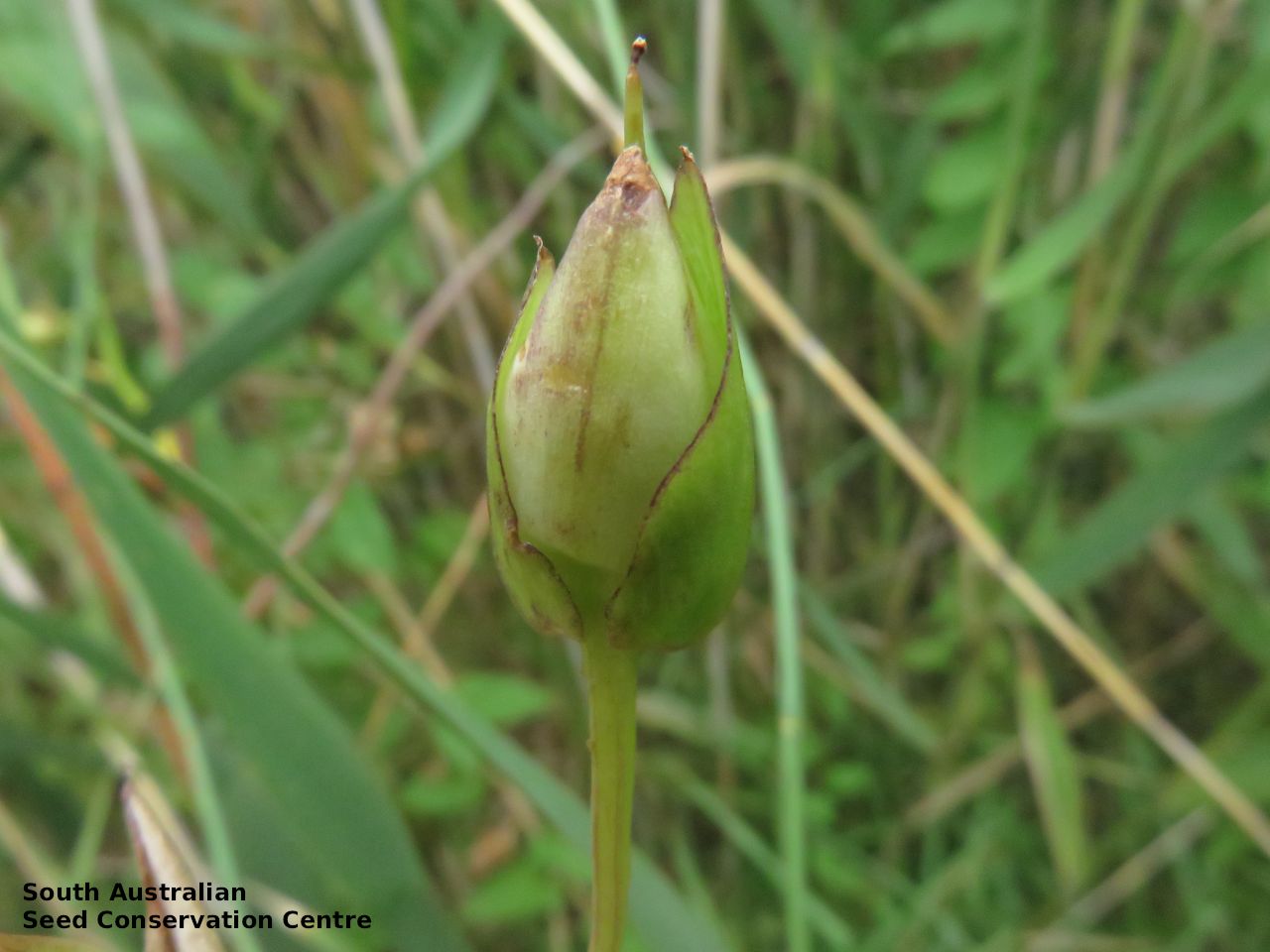







Botanical art
Prior names
Convolvulus sepium
Calystegia sepium ssp. roseata
Common names
Greater Bindweed
Large Bindweed
Etymology
Calystegia from the Greek 'kalyx' meaning calyx and 'stege' meaning a covering, referring to the two large bracteoles enclosing the calyx. Sepium from the Latin 'sepes' meaning a hedge or a fence, alluding to its habit of twining on other plants and forming a hedge.
Distribution and status
Found in the Mount Lofty Ranges, Murrayland and the lower South-east in South Australia, twining on other plants in swamps, stream margins and urban waste areas. Also found in Western Australia, New South Wales, Victoria and Tasmania. Native. Common in South Australia. Rare in Western Australia and Tasmania. Common in the other states.
Herbarium regions: Murray, Southern Lofty, South Eastern, Green Adelaide
NRM regions: Adelaide and Mount Lofty Ranges, South Australian Murray-Darling Basin, South East
AVH map: SA distribution map (external link)
Plant description
Glabrous, twining perennial. Leaves ovate to lanceolate, to 10 cm long and 8 cm wide, apex pointy, base sagittate to hastate. Flower solitary in axils, large, white or pinkish funnel-shaped, bracteoles ovate, longer than and enclosing calyx, overlapping only toward base. This species is similar to the introduced Calystegia silvatica which can be found in the same region and in some cases co-occurs, and differ by the inflated bracteoles that overlap for nearly entire length and leaves with blunt to round tips. Flowering between September and February. Fruits brown ovoid to subglobose capsule to 8 mm long. Seeds black, to 5 mm long. Seed embryo type is folded.
Seed collection and propagation
Collect seeds between November and April. Collect capsules that are maturing, turning brown and contain hard seeds inside. Capsules can be opened or unopened. Place the capsules in a tray and leave to dry for one to two weeks. Then rub the capsules gently by hand or with a rubber bung to dislodge the seeds. Use a sieve to separate the unwanted material. Store the seeds with a desiccant such as dried silica beads or dry rice, in an air tight container in a cool and dry place. This species has physical dormancy that needs to be overcome for the seed to germinate (e.g. nicking the seed coat).
| Location | No. of seeds (weight grams) | Number of plants | Date collected | Collection number Collection location | Date stored | % Viability | Storage temperature |
|---|---|---|---|---|---|---|---|
| MSB | 2,100 (87.8 g) | 100+ | 10-May-2007 | DJD808 Murray | |||
| BGA | 157 | 19-Apr-2007 | DJD798 Murray | 1-Aug-2007 | 90% | -18°C |
Number of plants: This is the number of plants from which the seeds were collected.
Collection location: The Herbarium of South Australia's region name.
% Viability: Percentage of filled healthy seeds determined by a cut test or x-ray.